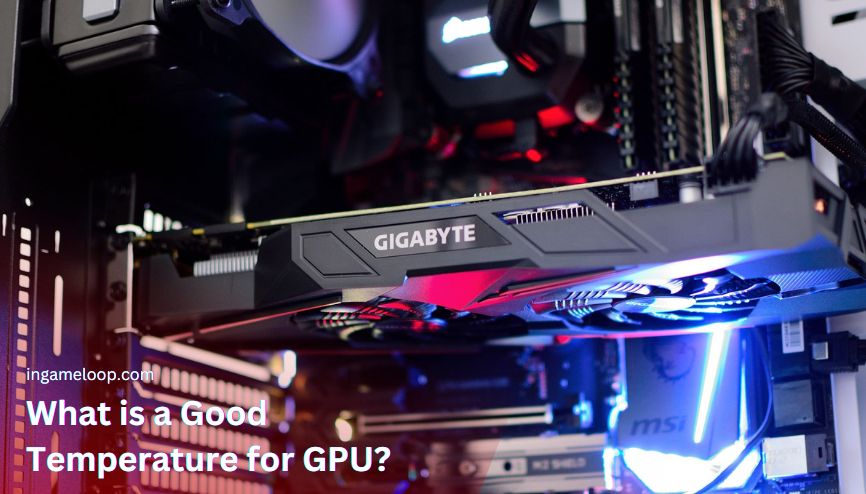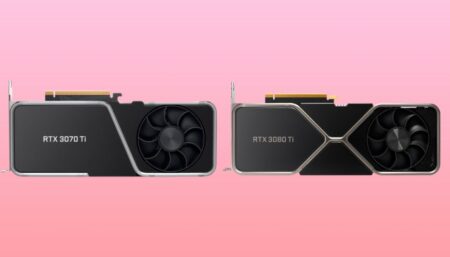
GPU stands for Graphic Processing Unit, whose motive is to render graphics and show visual information. The GPU collects data from the processor and works with software to decide where the graphics card places pixels on the screen. In recent technical advancements, this element has become a technical necessity to utilize true computing performance, which is for personal and business operations. Though they’re best known for their capabilities in gaming, GPUs are becoming more famous for use in creative production and artificial intelligence.
Structure-wise, GPUs are silicon-layered components with tantalum and palladium transistors and capacitors for better storage on a smaller chip. Due to such a structural arrangement, a graphics card often gets heated, especially when running at its peak potential. Plus, when you overclock the GPU while playing games or doing content creation, the chances of temperature increase also amplify. In such a condition, if you don’t know what is a good temp for GPU, it may be damaged. Read this post to better understand the temperature-related issue.
- What is a good temp for GPU?
- What is a good GPU temp for gaming or content creation?
- What is a good temperature for GPU mining?
- What temperature is too hot for a GPU?
- How to check GPU temperature?
- Factors that Contribute to Overheating of GPU
- What are the types of GPU?
- Integrated GPU
- Discrete GPU
- Which GPU type is best for you?
- Conclusion
What is a good temp for GPU?
GPUs keep running hot when processing graphically through tasks like gaming. The perfect temperature for a GPU to run when under load is between 149°F to 185°F (65°C to 85°C). But, if your GPU is running hotter than the 230°F or 110° Celsius mark, your GPU is running at an extreme temperature, so it can harm itself or other PC components. But the temperature limits are also affected by your usage. Its boundaries are different if you’re playing games, doing content creation, or doing crypto mining. Let’s check the temperature limits for each usage type!
What is a good GPU temp for gaming or content creation?
The optimum GPU temperatures for gaming, content creation, and graphics design range from 149°F to 185°F (65°C to 85°C) under typical use conditions. It is essential to note that GPU temperatures depend on the GPU’s manufacturer and model. Additionally, the optimal GPU temperature for gaming shouldn’t increase by 185°F (85°C), even if some are rated higher.
What is a good temperature for GPU mining?
Generally, the safe GPU temperature during mining is as low as possible. Generally speaking, while mining, if GPU temp continues between 140°F to 158°F (60°C to 70°C), it’s a safe zone. It is perfect if you can keep the mining temperature below 140°F or 60°C. At this point, you can get the best hash rate with a secure power supply.
What temperature is too hot for a GPU?
The general temperature range for a GPU under load is 149°F to 185°F (65°C to 85°C). So usually, temperatures above 185°F (85°C) are too hot for GPUs and not safe for them. When this temperature range attains, the GPU starts to slow down in order to avoid overheating. The image quality will not be correct as a result.
How to check GPU temperature?
Keeping an eye on the temperature of your graphics card is an easy task and can be done by various methods.
- Windows 10 task manager
- Through your GPU’s system monitoring software
- Through 3rd party software,
Factors that Contribute to Overheating of GPU
The characteristics that contribute to overheating of GPU include:
- GPU-dependant games
- The quality of the GPU’s cooling system
- Ambient temperature
- Case quality
- The GPU is dusty
- Your PC is old
- Airflow quality
- Computer fans aren’t working
- Bottlenecking
What are the types of GPU?
Two types of GPU are these that are discussed below:
Integrated GPU
The term-integrated graphics commits to a computer in which the GPU is on the exact same chip as the CPU. Since the GPU is built beside the CPU, it permits many benefits such as energy efficiency, small size, and less cost than the opposed discrete GPU. Integrated GPUs utilize the system RAM rather than having their RAM like discrete GPUs. In addition, the integrated GPUs don’t create as much heat as the discrete graphics nor consume as much power.
Discrete GPU
A discrete GPU, also known as a dedicated graphics card, is structurally separated from the CPU. It can be used to process instructions individually from the CPU since it’s embedded on the same die as it’s in the case of the integrated graphics card. A discrete graphic card comes with its own form of video RAM (video random access memory). This attribute gives the discrete GPU a quick approach to image data. But the downside of this card is the excessive heat production that we’ll discuss in this post.
Which GPU type is best for you?
Each GPU type has its dedicated functions, depending on what type of system you wish for or what you’re after. With a discrete GPU, users can enjoy a greater amount of RAM, a faster CPU, good graphics, and a greater amount of hard drive space for storage. Therefore, discrete GPUs suit sober gamers or professionals who do graphic work.
Suppose a person needs a computer system to browse the web or use page editors. In that case, an integrated GPU is enough, and you won’t be paying the price for something you don’t need. This doesn’t mean you can’t play games on an integrated GPU. However, the quality will adjust in contrast to discrete GPUs.
Conclusion
The GPU or graphics card constantly works, so you enjoy the high-quality gaming experience or do your productive content creation tasks. But you have to maintain it at its optimal temperature, regularly clean your internal system, and put only a handful of tasks on the card. In addition, you can upgrade your system’s CPU to support the GPU’s performance and reduce its strain. Well, we have seen all the safe temperature limits for gaming, graphics designing, and crypto mining in this article.
The perfect temperature for a GPU to run when under load is between 149° to 185°F (65–85° Celsius), depending upon the card and your usage. This temperature limit applies to gaming, content creation, and graphics designing. In contrast, if we talk about mining, any GPU temperature between 140°F to 158°F (60°C to 70°C) is considered safe. Additionally, if you can keep mining temps below 60°C, it is the perfect situation. When this temperature range gains, the GPU starts to slow down in order to prevent overheating.


![GTX 980 Ti VS GTX 1070 [Which one is Better]](https://www.ingameloop.com/wp-content/uploads/GTX-980-Ti-VS-GTX-1070--450x257.jpg)


![Is eGPU Worth it? [2024]](https://www.ingameloop.com/wp-content/uploads/Is-eGPU-worth-it-450x210.webp)

